USER GUIDE FOR WIRELESS AMBIENT HUMIDITY & TEMPERATURE SENSOR WS433-M12F-ATH
| WS433-M12F-ATH-MN-EN-01 |
FEB-2020 |
This document is applied for the following products
| SKU |
WS433-M12F-ATH |
HW Ver. | 2.5 | FW Ver. | 5.04 |
| Item Code | WS433-M12F | Wireless Sensor Transmitter 433Mhz, compatible with all DULP sensor modules, AA 1.5VDC battery, IP67 | |||
| ATH-11 | Compact ambient Humidity & Temperature Sensor DULP module, M12-male connector | ||||
| ATH-12-300 | 300mm Cable type ambient Humidity & Temperature Sensor DULP module, M12-male connector | ||||
| Notes | * Must order for both wireless transmitter and sensor module | ||||
1. Functions Change Log
| HW Ver. | FW Ver. | Release Date | Functions Change |
| 2.5 | 5.04 | NOV-2019 |
|
2. Introduction
Wireless Ambient Humidity & Temperature Sensor is a combination of wireless sensor transmitter WS433-M12F and sensor ATH, it utilises Digital capacitance humidity sensor to deliver high accuracy and stable measurement. The wireless portion is Sub-GHz technology from Texas Instruments allows long range transmission at ultra-low power consumption. It will connect 2-way wirelessly to the wireless co-ordinator WS433-CL to send data and receiving the configuration. It can be configured the operation parameters like data sending interval, health check cycle...remotely from Globiots platform or via ModbusRTU software (thru the WS433-CL). Its default data rate is 50 kbps, can be switched to 625 bps to increase the communication range. It can last up to 10 years with a single AA battery. There are a lot of applications as environment monitoring for office, warehouse, data center, hospital, agriculture...
3. Specification
| SENSOR SPECIFICATION : | |
| Sensor | Digital type, factory calibrated, output both Humidity & Temperature values |
| Humidity measuring range & accuracy | 0 .. 100 %RH, +/- 2.0% |
| Humidity resolution | 0.1% |
| Temperature measuring range & accuracy | -40 .. + 85 oC, +/- 0.2 oC |
| Temperature resolution | 0.1 oC |
| Sensor Filter | 20um Alloy sintered filter |
| Electrical connection | M12-male connector |
| WIRELESS TRANSMITTER SPECIFICATION : | |
| Data speed | Up to 50kbps |
| Tranmission distance, LOS | 1000m |
| Antenna | Internal Antenna |
| Battery | 01 x AA 1.5-3.6VDC, up to 10-year operation, depends on configuration |
| Frequency Band | ISM 433Mhz, Sub-GHz technology from Texas Instrument, USA |
| International Compliance | ETSI EN 300 220, EN 303 204 (Europe) FCC CFR47 Part15 (US), ARIB STD-T108 (Japan) |
| Vietnam Type Approval Certification | QCVN 73:2013/BTTTT, QCVN 96:2015/BTTTT (DAVITEQ B00122019) |
| Security Standard | AES-128 |
| Operating temperature of PCB | -40oC..+60oC (with AA L91 Energizer) |
| Housing | Poly-carbonate, IP67 |
| Installation method | L-type bracket SUS304 , by M4 screws or double-sided 3M tape (included) |
| Product dimensions & weight | 125x30x30mm, < 60g (without battery) |
| Box dimension & gross weight | 190x50x50mm, < 100g |
4. Product Pictures
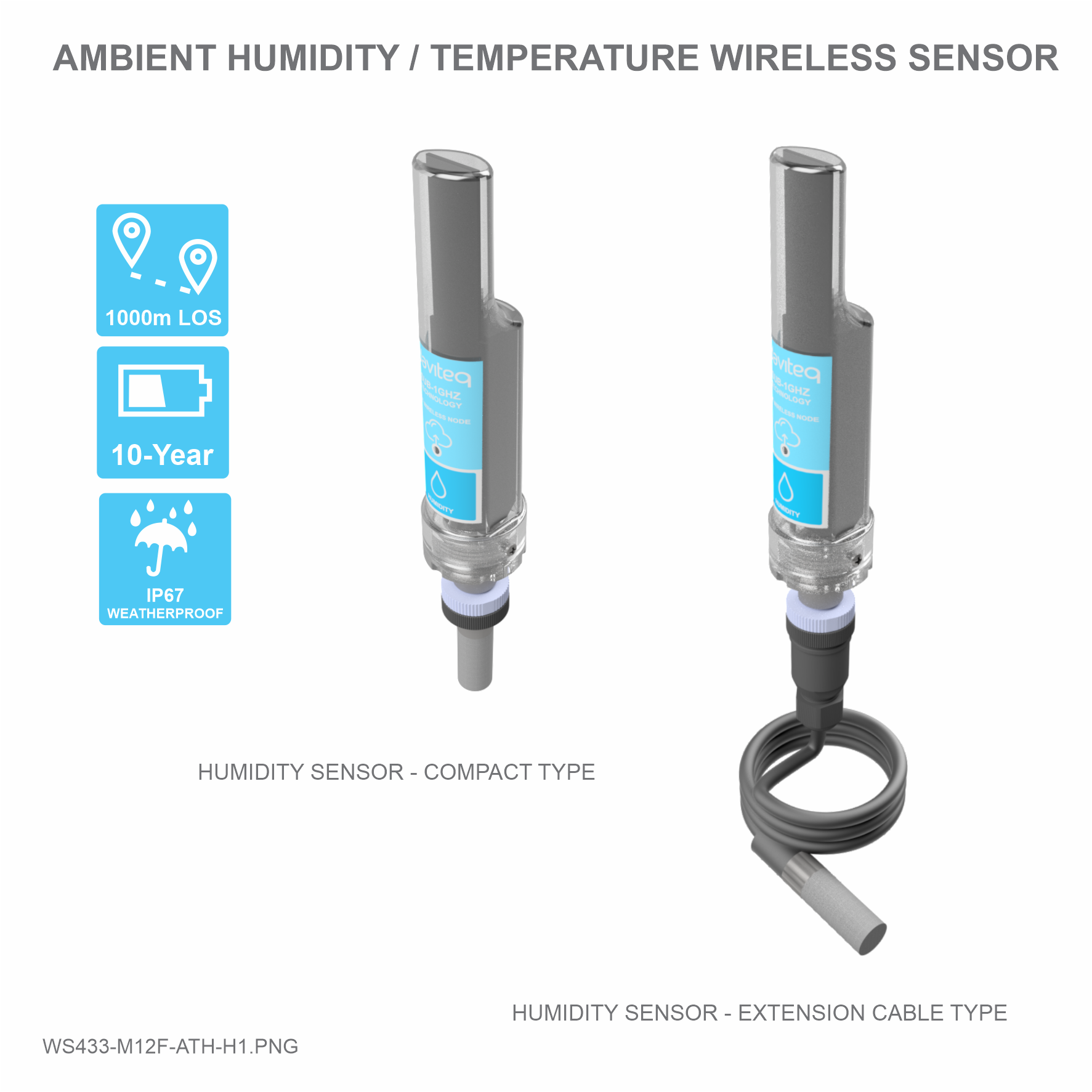 |
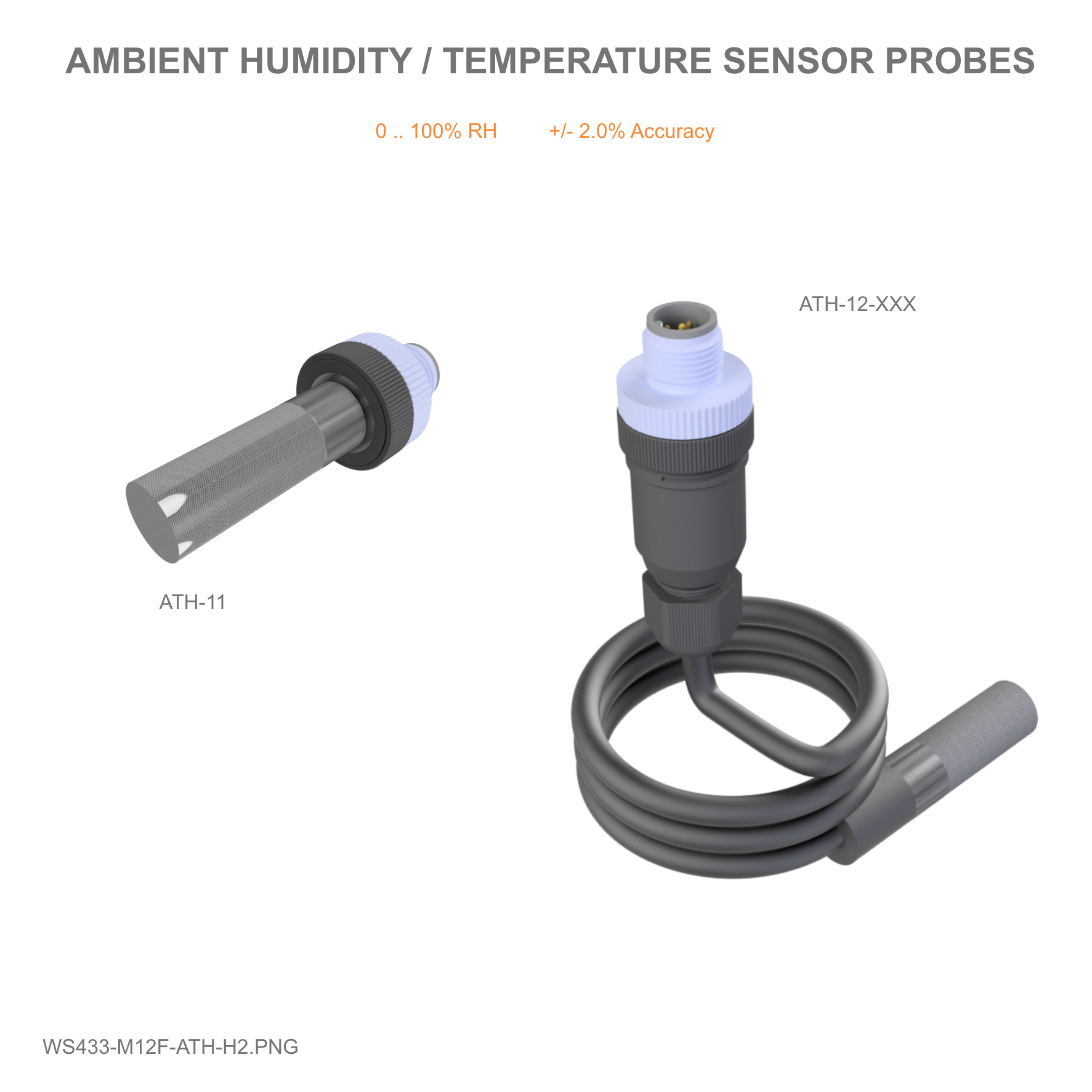 |
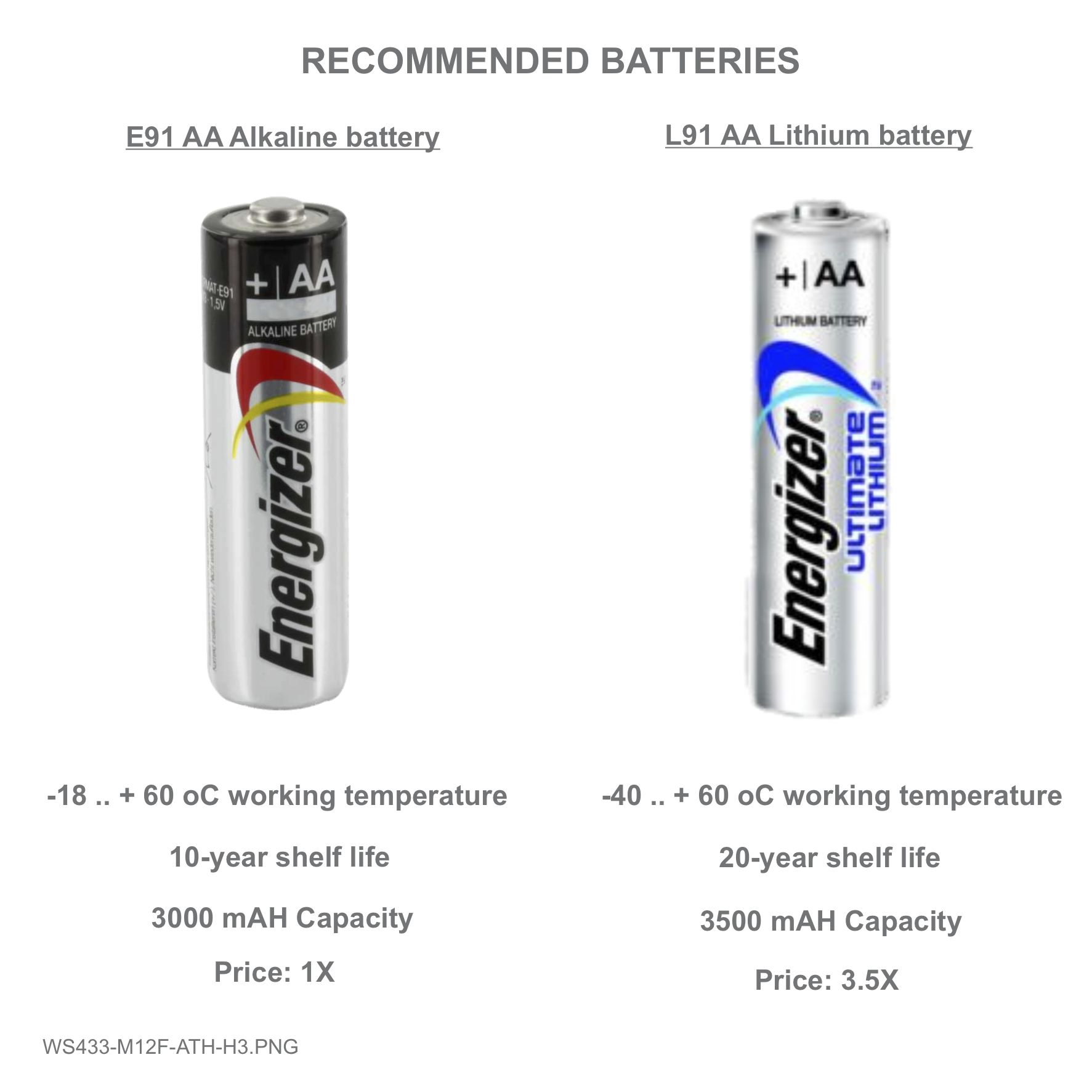 |
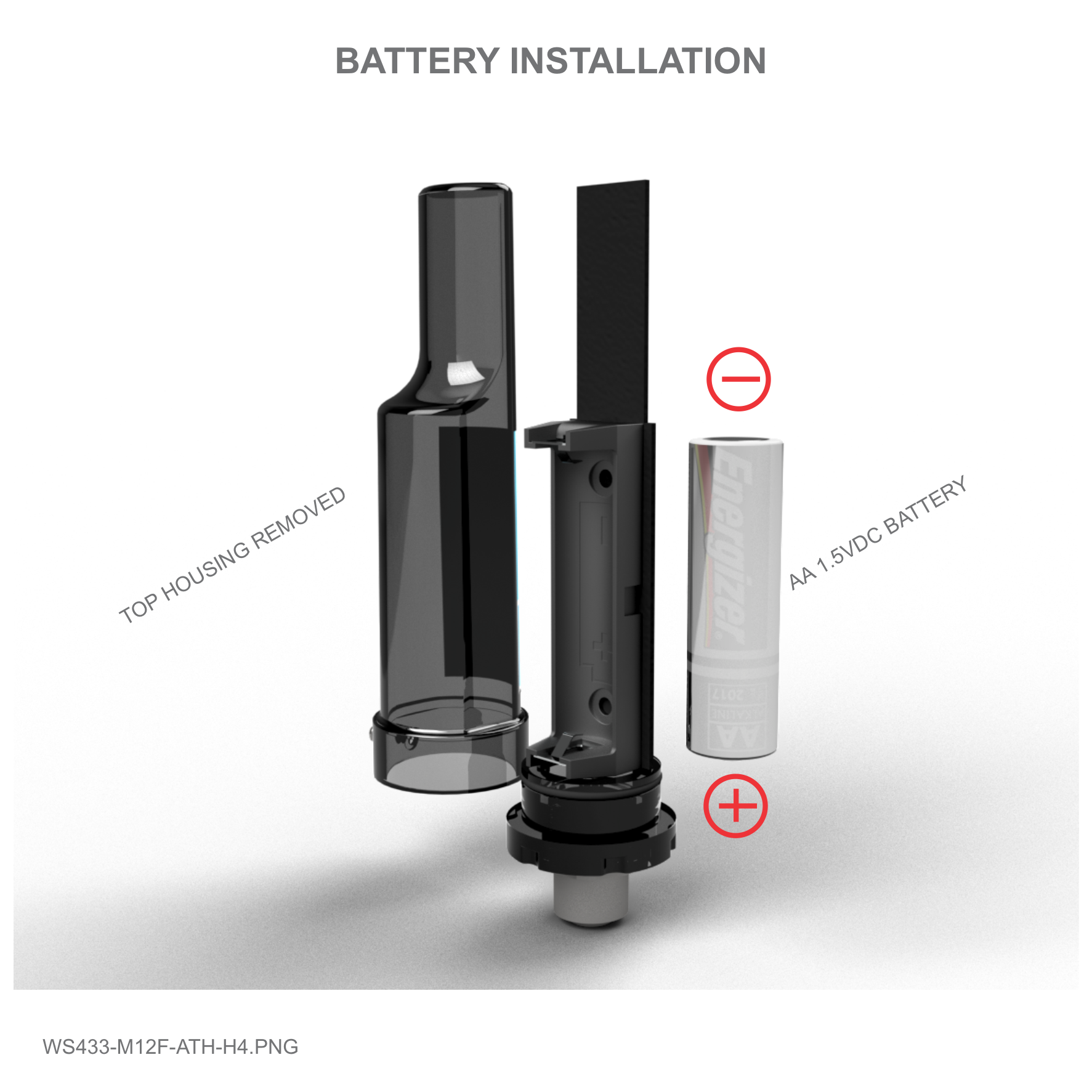 |
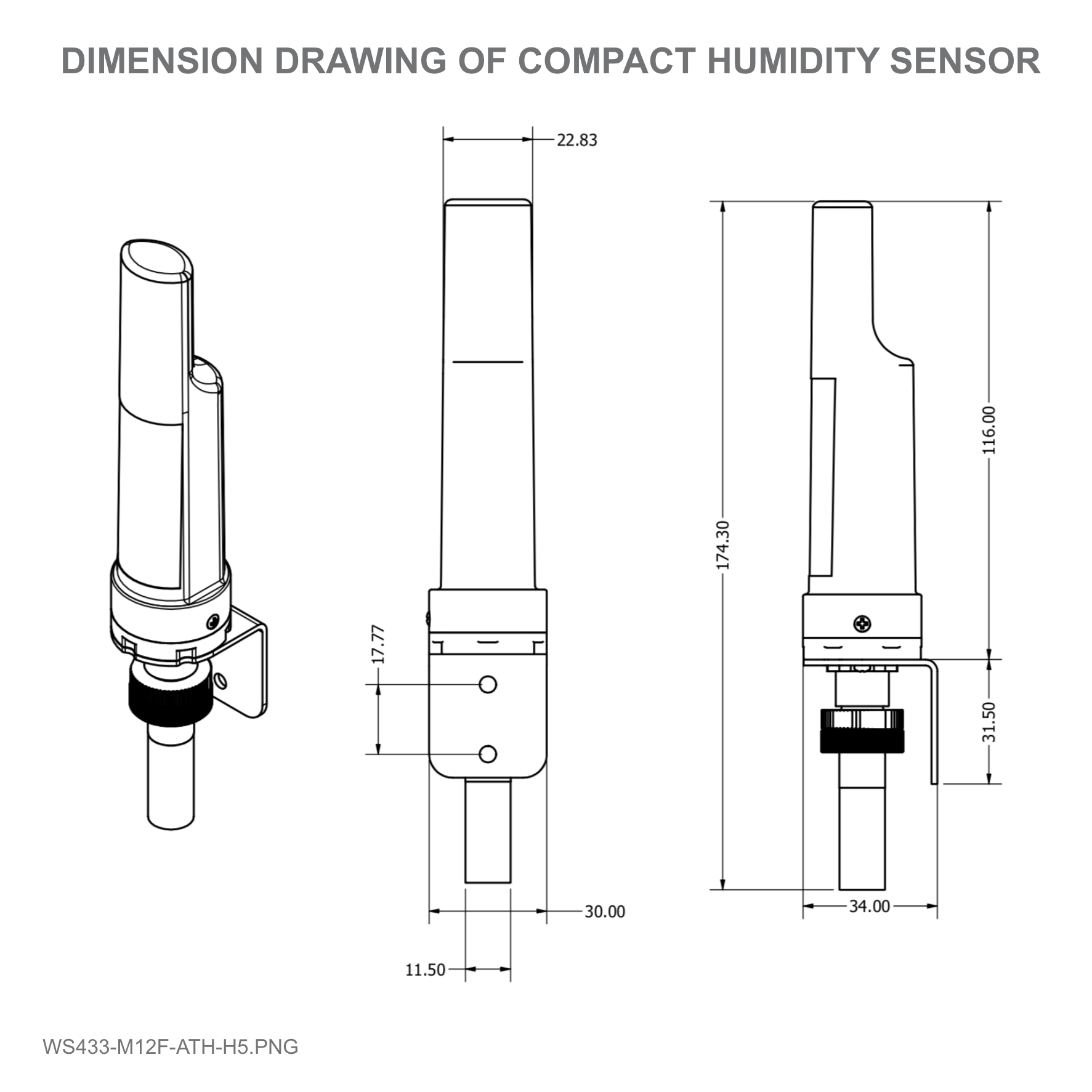 |
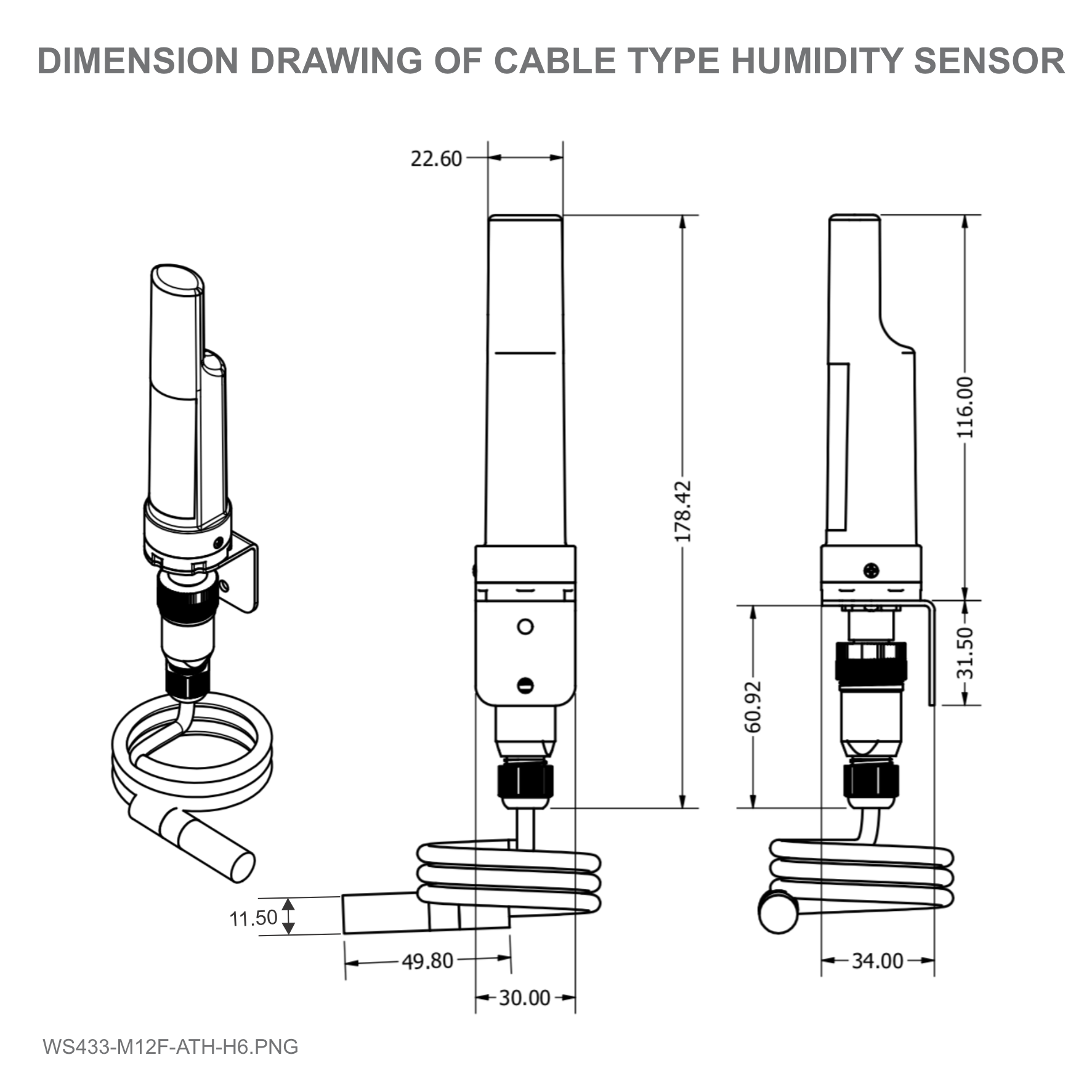 |
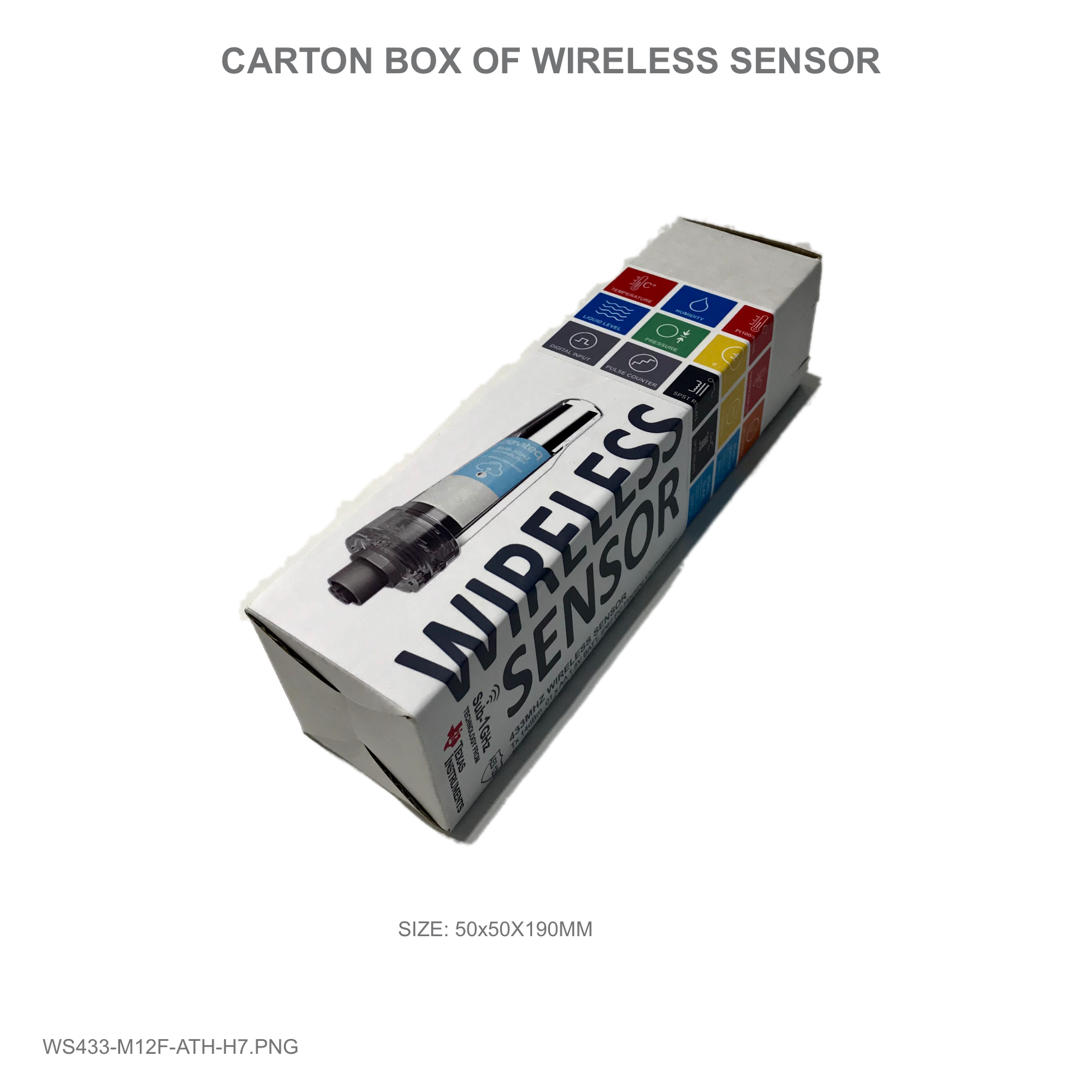 |
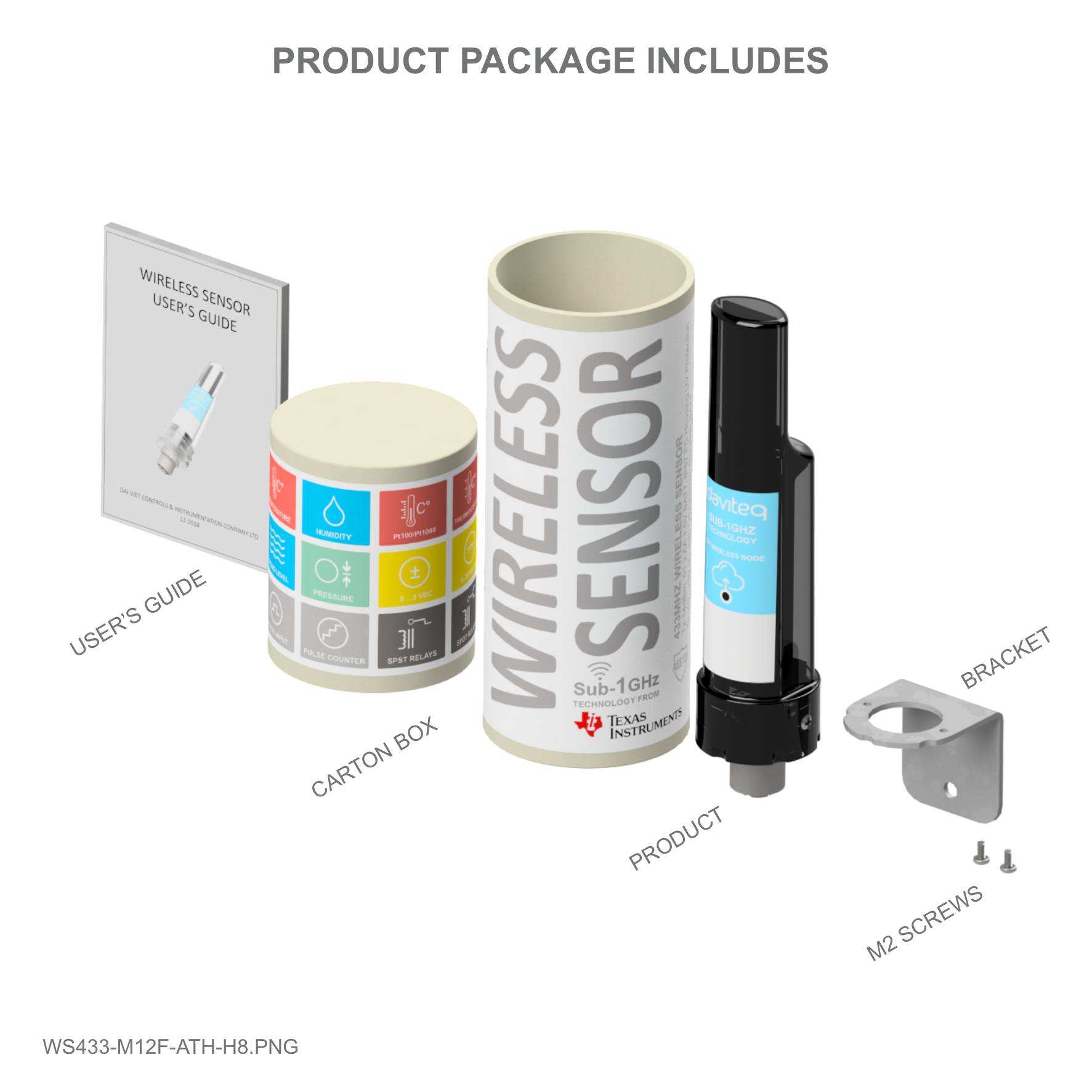 |
5. Operation principle
Process of measurement
When the sensor sampling time interval is reached, for example 2 minutes, the node will wake up and switch ON the power supply to supply the energy to external sensor to start the measurement. Depends on the type and characteristic of external sensor, the sensor will take a certain time to finish the measurement.
For example, the measurement time is 200mS, after this time, the node will read the value of sensor using I2C, node will switch OFF power supply to external sensor to save energy.
Once reading the sensor value, the raw data is X, it can be scaled to any engineering value by the following formula:
Y = aX + b
Where:
X: the raw value, reading from output of sensor before calibrated/validated;
Y: the calculated value, a desired output value of sensor, after calibrated/validated;
a: constant (default value is 1)
b: constant (default value is 0)
By default a= 1 and b=0 ==> Y=X
The Y value will be compared with Lo and Hi threshold.
Status bytes of sensor Node
- Hi-Byte is error code
| Error code | Description |
| 0 | No error |
| 1 | Just exchange the sensor module but node has not been reset ==> please take out the battery for 20s then install it again to reset node to recognize the new sensor module |
| 2 | Error, sensor port M12F shorted to GND |
| 3 | Error, sensor port M12F shorted to Vcc |
| 4 | Error, sensor port M12F shorted each other |
- Lo-Byte is sensor type
| Error code | Description |
| 0 | No error |
| 1 | Just exchange the sensor module but node has not been reset ==> please take out the battery for 20s then install it again to reset node to recognize the new sensor module |
| 2 | Error, sensor port M12F shorted to GND |
| 3 | Error, sensor port M12F shorted to Vcc |
| 4 | Error, sensor port M12F shorted each other |
Logic status of parameters
- Hi-Byte is Logic status of parameter 1
- If parameter 1's value > high threshold 1 => Hi-Byte of Logic status = 1
- If parameter 1's value < low threshold 1 => Hi-Byte of Logic status = 0
- If parameter 1 is digital => Hi-Byte of Logic status = parameter 1's value
- Timer up 1 = (Total time when Hi-Byte of Logic status = 1)
- Timer down 1 = (Total time when Hi-Byte of Logic status = 0)
- RisingEdge counter 1 = (Counter value when Hi-Byte of Logic status changes from 0 to 1)
- FallingEdge counter 1 = (Counter value when Hi-Byte of Logic status changes from 1 to 0)
- Lo-Byte is Logic status of parameter 2
- If parameter 2's value > high threshold 2 => Lo-Byte of Logic status = 1
- If parameter 2's value < low threshold 2 => Lo-Byte of Logic status = 0
- If parameter 2 is digital => Lo-Byte of Logic status = parameter 2's value
- Timer up 2 = (Total time when Lo-Byte of Logic status = 1)
- Timer down 2 = (Total time when Lo-Byte of Logic status = 0)
- RisingEdge counter 2 = (Counter value when Lo-Byte of Logic status changes from 0 to 1)
- FallingEdge counter 2 = (Counter value when Lo-Byte of Logic status changes from 1 to 0)
Ambient Temperature Sensor Module (ATH)
- Feature of measuring humidity in environment:
- Humidity measuring range & accuracy: 0 .. 100 %RH, +/- 2.0%
- Resolution ±0.1%
- Long-term Drift ±0.25%RH/year
- Feature measuring ambient temperature:
- Temperature Range -40oC to +125oC
- Accuracy ±0.4oC
- Resolution ±0.1oC
6. Configuration
6.1 Reset Sensor Node
- Step 1: Using Philips screw driver to unscrew M2 screw at the side of housing and carefully pull out the top plastic housing in the vertical direction.
- Step 2: Press the button until you see LED flashes 3 times to reset
6.2 Data rate configuration 625 kps
- Take off the sensor cover like Step 1 and press the button until you see LED flashes 2 times for 625 kps option
6.3 Wireless sensor configuration with co-ordinator
You can configure the wireless sensor with the co-ordinator by following the steps in the link below:
7. Installation
7.1 Mounting bracket installation
Locate the place where the wireless sensor is mounted, from that locate the position to mount the bracket;
Placing the wireless module on bracket and secure it by 02 x M2 screws (supplied in accessory bag)
Note: The bracket can be mounted on the wireless module in both direction, upward or downward
The mounting bracket is made from hard metallic material. The following steps are for mounting this bracket;
7.2 Installation location
The bracket will be fixed on the wall or surface by 2 x M4 screws (supplied by customer) or double-sided 3M tape (included in accessory bag in carton box);
- DO NOT install the wireless module inside a complete metallic box or housing. The RF signal can not pass through metallic wall;
- This wireless module would be installed a semi-metallic box, because the RF signal can pass through the non-metal wall/are;
- The best case is to install the wireles module inside or Non-metallic box;
Some non-metallic materials: plastic, glass, wood, leather, concrete, cement…
 |
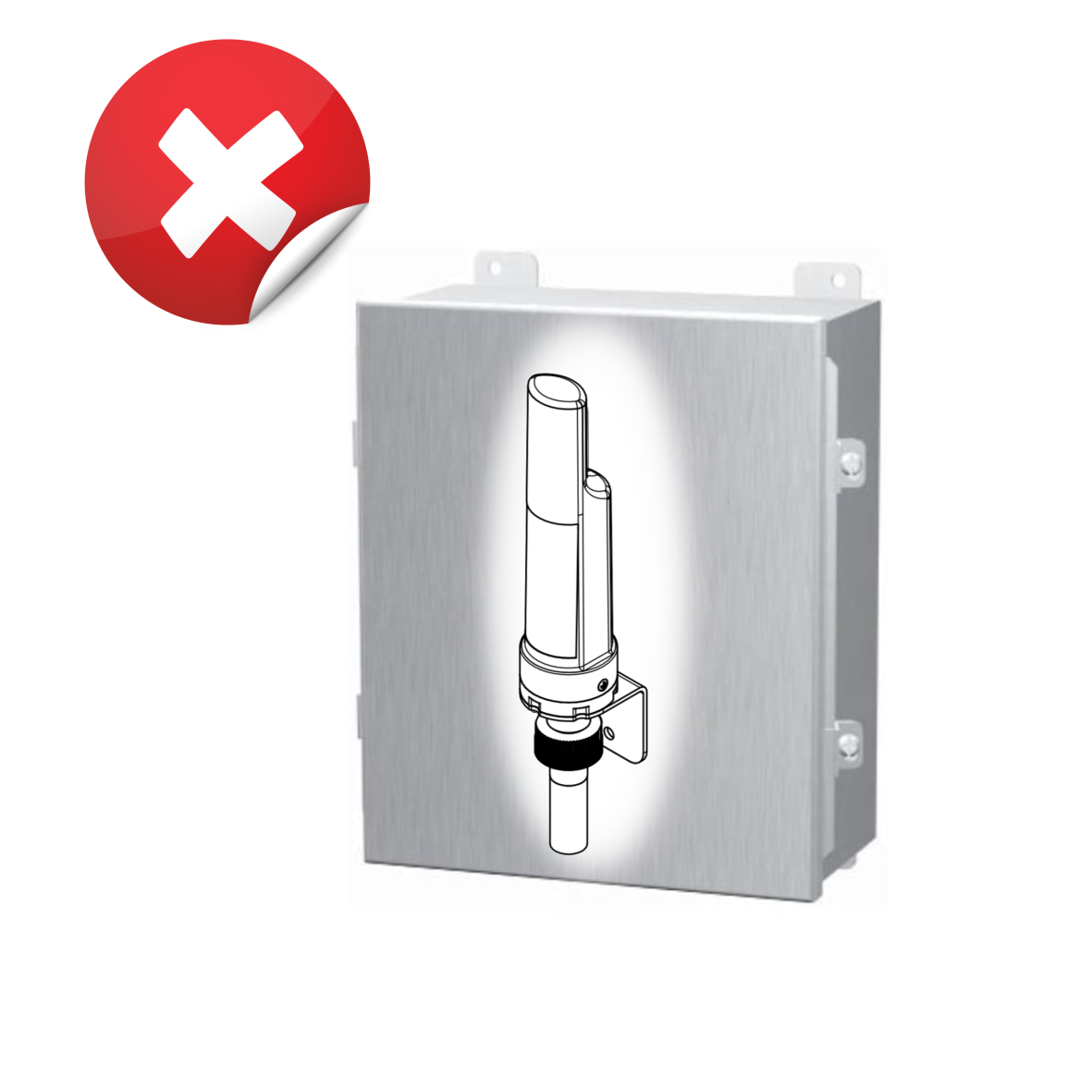 |
7.3 IO Wiring & Sensor installation
The sensor module has M12-male connector which is matched with M12-female connector on wireless module;
Carefully plug the sensor module onto wireless module, using HAND to tighten slowly until stop;
Note: please DO NOT over tightening by hand or other tool, it can damages the M12 connector;
7.4 Power Supply & Battery installation
Steps for battery installation:
- Using Philips screw driver to unscrew M2 screw at the side of housing
- Carefully pull out the top plastic housing in the vertical direction
NOTE: Because of O-ring, it requires to have much pulling force at the beginning, therefore please do it carefully to avoid the damage of circuit board which is very thin (1.00mm);
- Insert the AA battery, please take note the poles of battery
- Insert the top plastic housing and locking by M2 screw
8. Troubleshooting
| No. | Phenomena | Reason | Solutions |
| 1 | The status LED of wireless sensor doesn't light up |
|
|
| 2 | Wireless sensor not connected to co-ordinator |
|
|
9. Support contacts
|
Manufacturer Daviteq Technologies Inc Email: info@daviteq.com | www.daviteq.com
|
Distributor in Australia and New Zealand Templogger Pty Ltd Tel: 1800 LOGGER Email: contact@templogger.net |

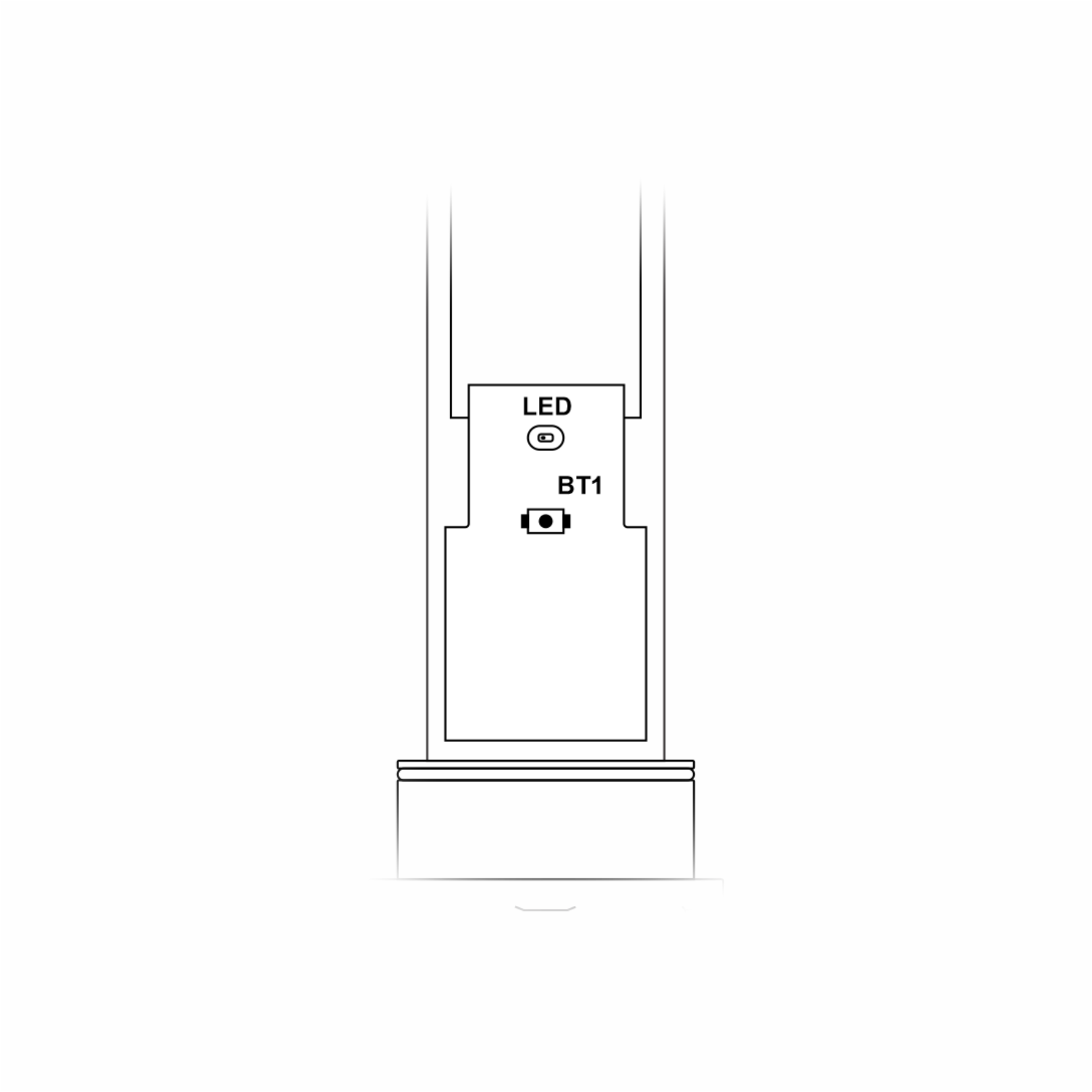
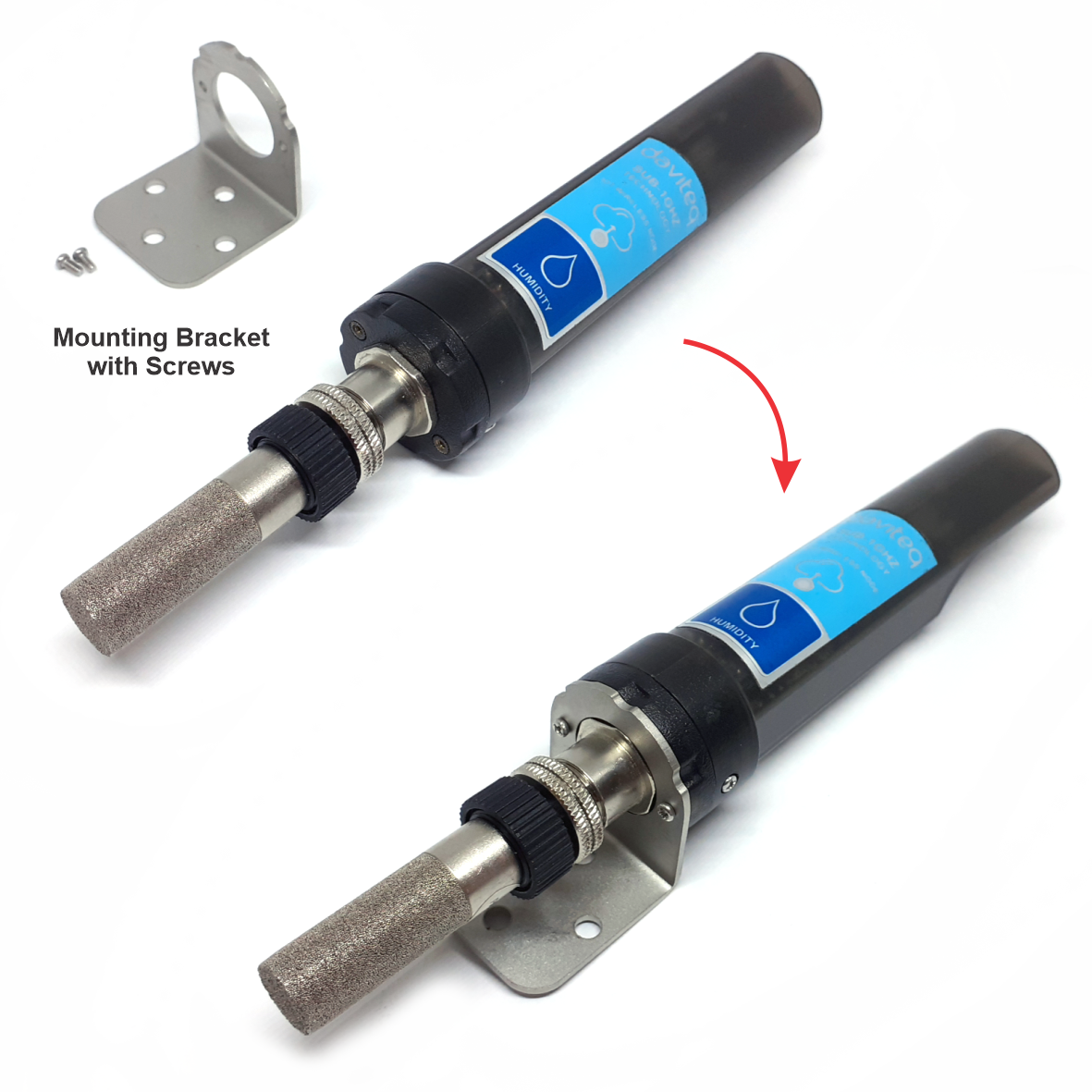
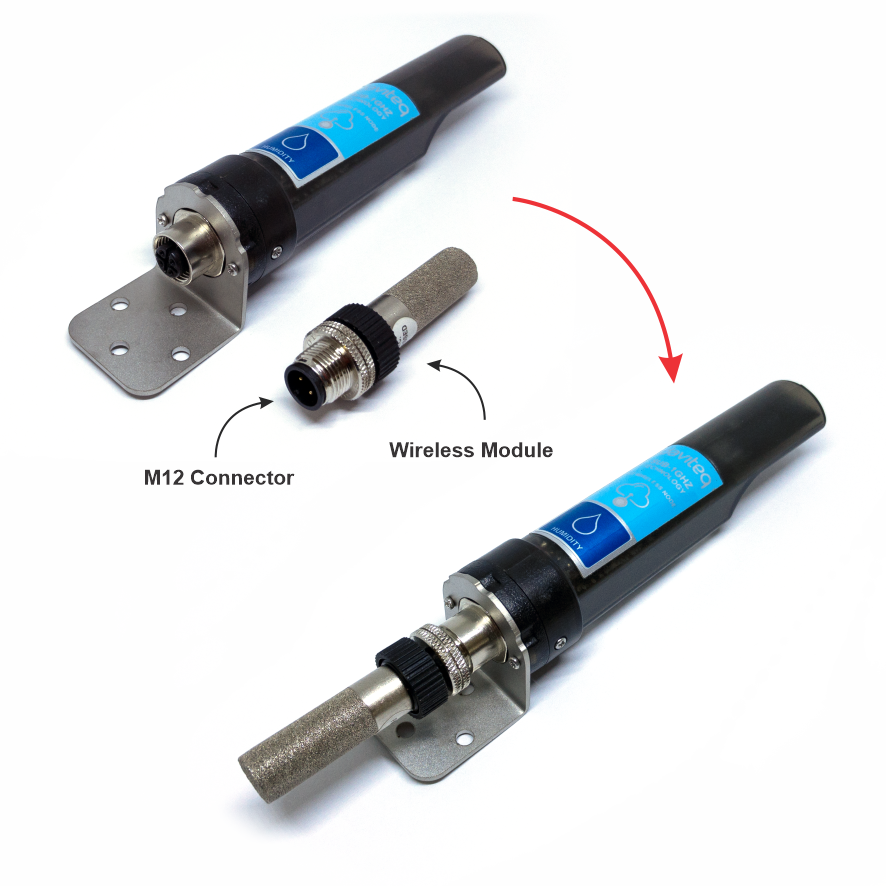
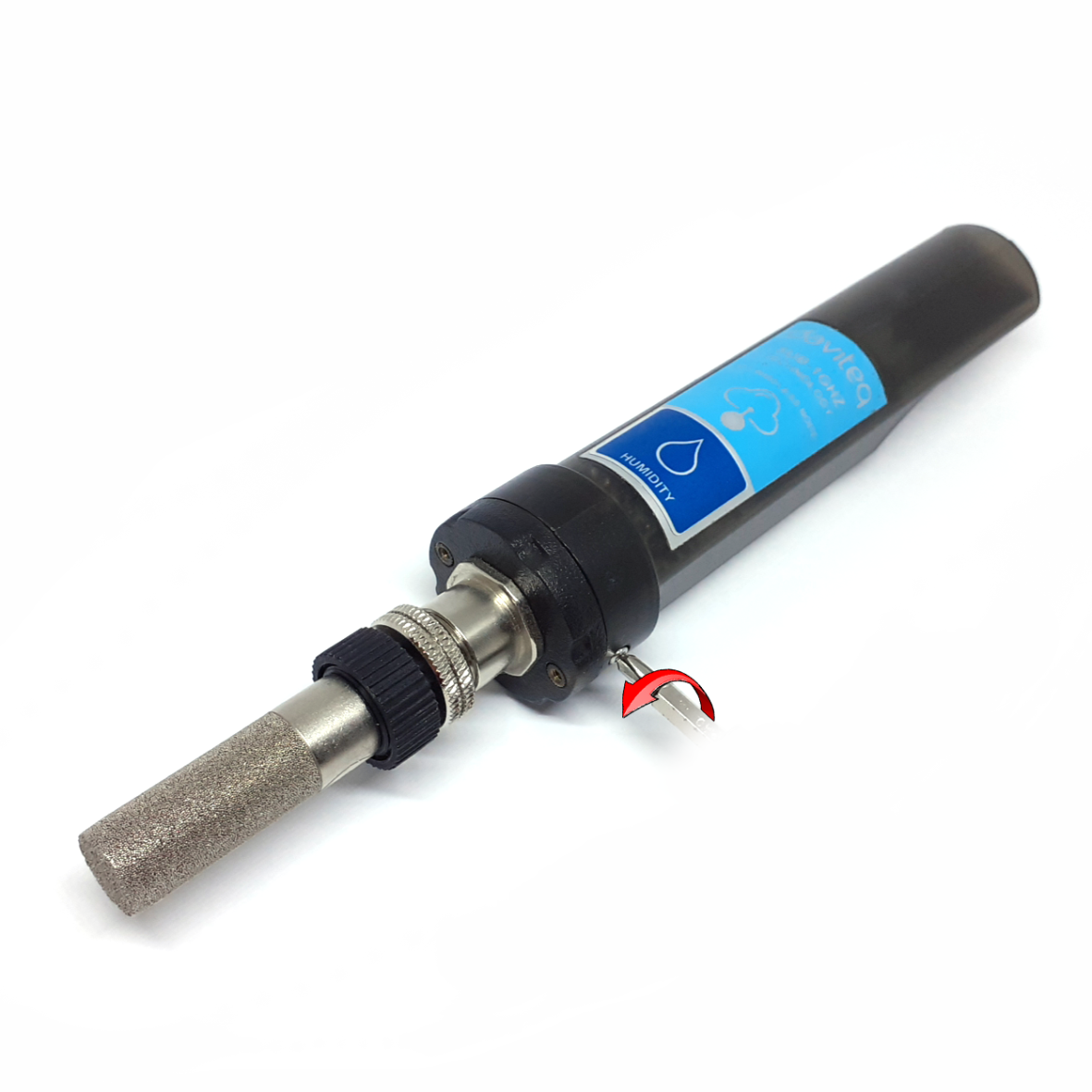

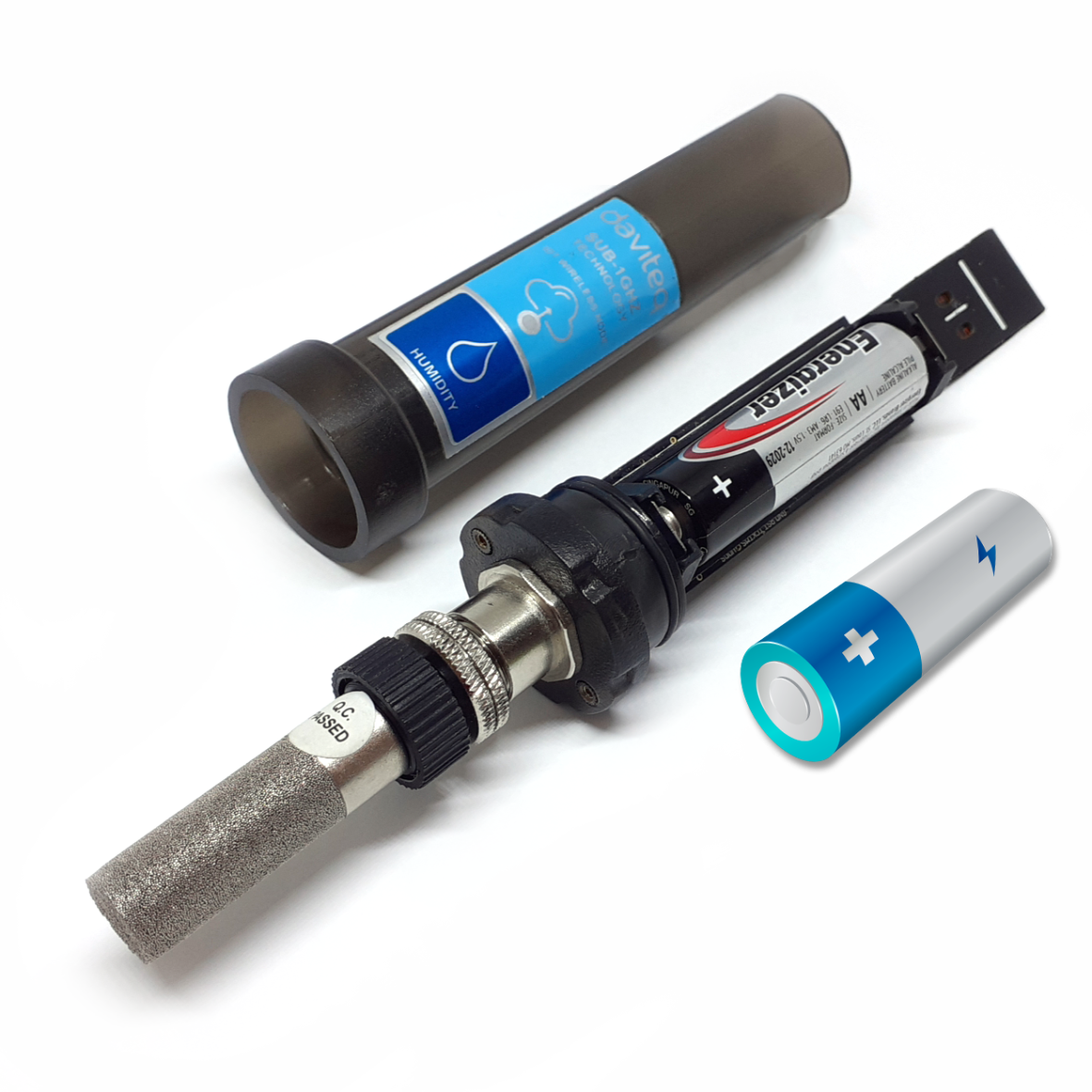
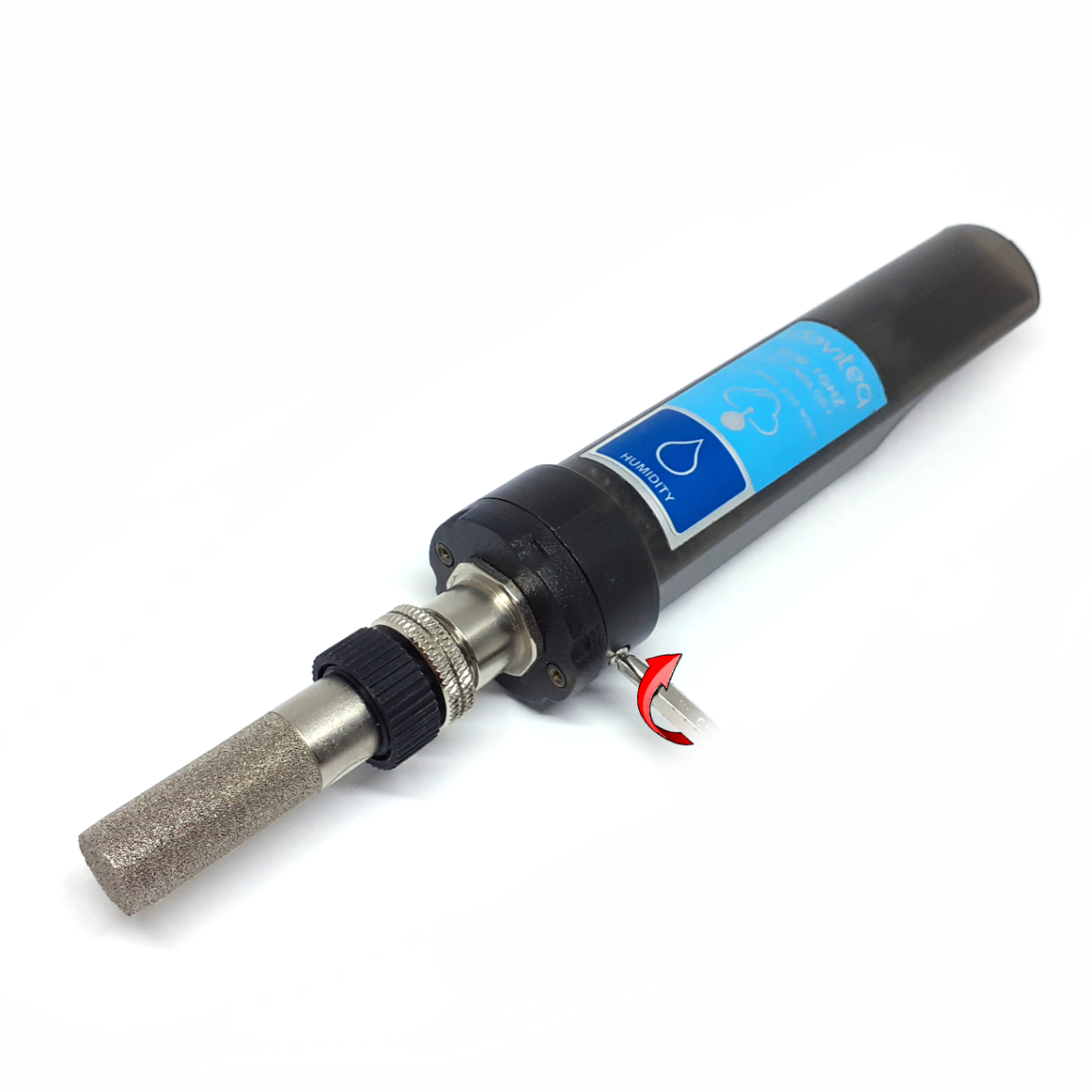


No Comments